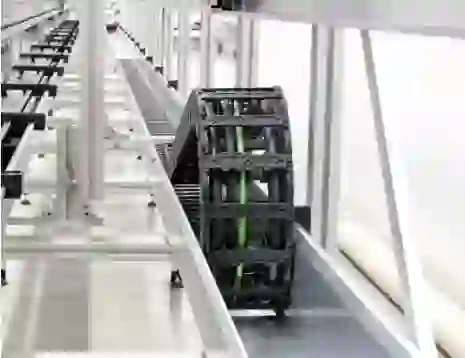synchro belt
Understanding Synchro Belts An Essential Component in Mechanical Systems
In the realm of mechanical systems, synchro belts play a crucial role in ensuring smooth and efficient transmission of power between different components. Often overlooked, these belts are integral in various applications, ranging from automotive engines to industrial machinery. This article aims to shed light on what synchro belts are, how they work, their types, benefits, and applications.
What is a Synchro Belt?
A synchro belt, commonly referred to as a synchronous belt, is a type of power transmission belt that uses teeth to engage with toothed pulleys. Unlike conventional V-belts, which can slip and experience power loss, synchro belts maintain a constant velocity ratio between the driving and driven pulleys. This is primarily due to the interlocking teeth, which provide a positive drive without the risk of slippage, ensuring precise timing and synchronization in mechanical operations.
How Do Synchro Belts Work?
The operation of a synchro belt is straightforward yet effective. When the driving pulley rotates, its teeth mesh with the teeth on the synchro belt. As the belt moves, it transmits the rotational motion to the driven pulley, allowing it to turn in harmony with the driving shaft. The precise engagement of teeth eliminates the gaps that could lead to slippage, delivering a consistent performance. This feature makes synchro belts ideal for applications where timing is critical, such as in engine timing systems, robotic arms, and conveyor systems.
Types of Synchro Belts
Synchro belts come in various designs and materials to cater to different applications. The most common types include
1. Rubber Synchronous Belts These are the most widely used synchro belts, known for their durability and flexibility. They are often reinforced with materials like fiberglass or tensile cords for added strength.
2. Polyurethane Synchronous Belts Known for their high wear resistance and low friction, these belts are suitable for high-speed applications and environments where chemical exposure is a concern.
3. Plastic Synchronous Belts Made from robust plastic materials, these belts are lightweight and resistant to harsh conditions, making them ideal for specific industrial applications.
synchro belt

4. Steel Reinforced Belts These belts are designed for heavy-duty applications that require high tensile strength and resistance to elongation. The steel reinforcement allows them to handle greater loads and stress.
Benefits of Using Synchro Belts
1. Precise Timing The primary advantage of synchro belts is their ability to maintain accurate timing and synchronization between driven components. This is critical in applications where precise motion control is essential.
2. Reduced Slippage Unlike traditional belts, synchro belts do not slip, resulting in more reliable power transmission and less wear and tear on other components.
3. Lower Maintenance The durability of synchro belts often leads to less frequent replacements and lower overall maintenance costs.
4. Higher Efficiency The efficient transfer of power and reduction of energy loss contribute to an overall increase in the performance of mechanical systems.
5. Versatility Synchro belts can be used in a wide range of applications, making them a versatile choice for various industries, including automotive, robotics, manufacturing, and HVAC systems.
Applications of Synchro Belts
Synchro belts are utilized in numerous applications across different industries. In the automotive sector, they are commonly found in timing belts for engines, ensuring that the engine's camshaft and crankshaft operate in sync. In manufacturing, synchro belts are integral in conveyor systems, enabling precise movement of materials and products. Robotics heavily relies on synchro belts for accurate positional control in robotic arms. Additionally, HVAC systems use synchro belts for effective blower motor drives.
Conclusion
In conclusion, synchro belts are a vital component in the functionality of various mechanical systems. Their ability to provide consistent power transfer, precise timing, and reduced maintenance needs makes them an invaluable asset across multiple industries. As technology continues to evolve, the design and application of synchro belts will undoubtedly advance, further enhancing their efficiency and functionality in power transmission. Understanding the importance and benefits of synchro belts is essential for engineers and technicians alike, ensuring that they can optimize mechanical systems for peak performance.








